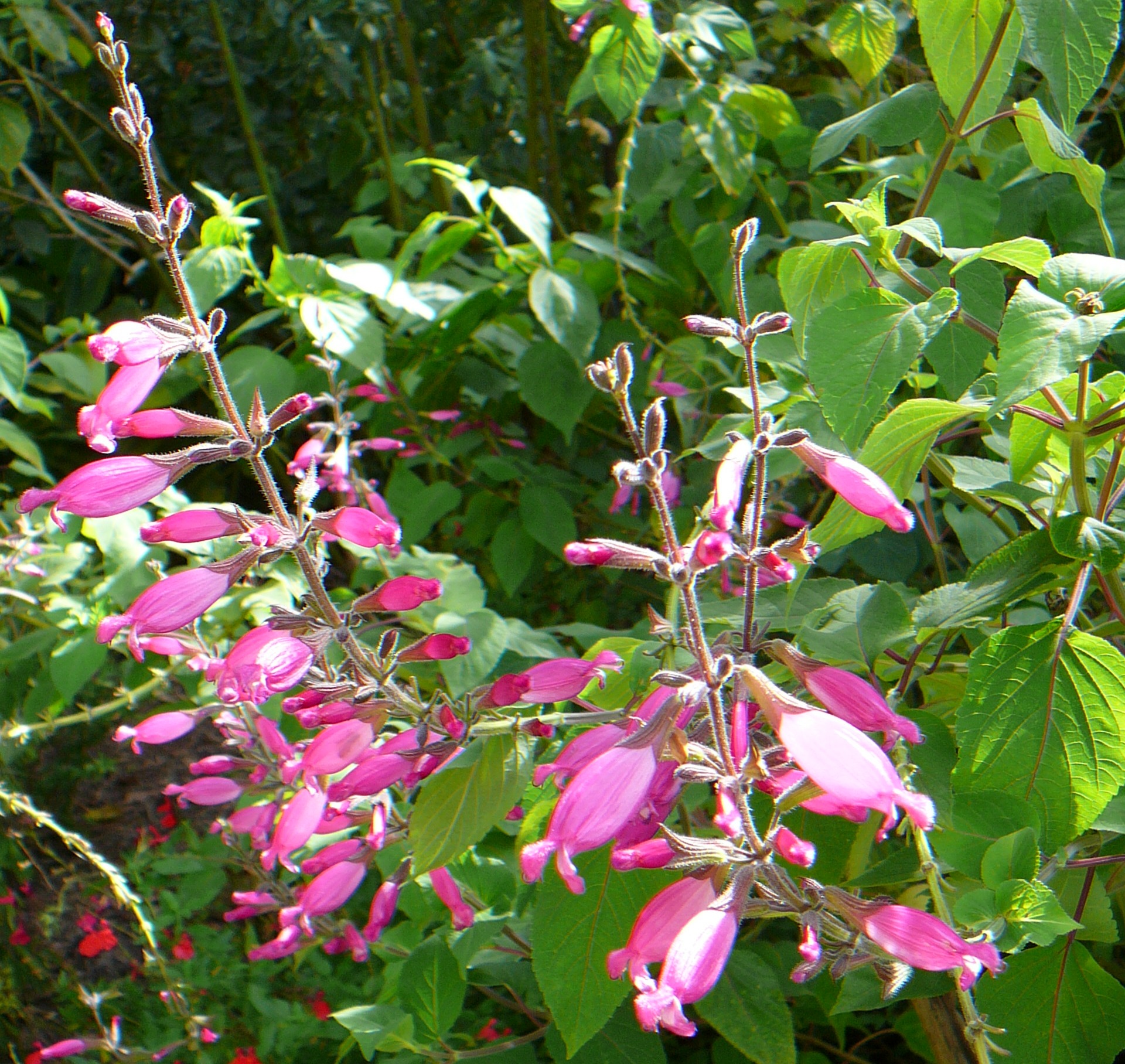Salvia involucrata ‘Hadspen’ : is a medium upright perennial 1.2-1.5mH, herbaceous with long spires of rose coloured flowers in summer.

Salvia ‘Hadspen’ is winter dormant and has perennial growth.
Flowers: are tubular, bright cerise or rose coloured with a fat tube, a small hairy hood and the bottom lobe curled down beneath.
All parts of the flower are this clear cerise colour except for the large white beeline patch around the throat, which guides the bees and insects into the flower.
Small honeyeater birds with long thin beaks are the main pollinators of these flowers.
As S. ‘Hadspen is herbaceous, coming up in spring, the main flowering period is from late spring, over summer and into autumn.
Flowers appear on a very long flowering stem in whorls of 4 flowers. Often 2-3 flowers are open with others opening later, thus extending the flowering period. Each whorl is evenly spaced along the stem.
All involucrata hybrids have an involucrote, some large, some only very small. An involucrote is a knob of bracts full of more flowers.
Salvia ‘Hadspen’ has an elongated white knob. Each bract curls back at the tip to reveal the flower beneath. These bracts are green beneath, remaining for some time until the whole whorl is completely open. The green tips add a gorgeous contrast to the white of the outside and the pink of the corollas.
Leaves: are a broad cordate shape with a pointed tip, mid green with a hint of blue, slightly hairy on both surfaces with a pink midrib and petiole and small crenations around the edges.
Salvia ‘Hadspen’ is a wonderful perennial Salvia for summer flowering, attracting bees and providing enough cover for small birds.
Liking a sunny sheltered position, plant either in the middle of a large garden bed or at the back providing a backdrop for other smaller shrubs and perennials.
Plant with other pinks, purple, blue and white flowered shrubs and perennials, showing off the delicate knobs of flowers as they unfurl.
As the stems are hollow, they are easily bent over from strong winds or other large birds crashing into them, so plant in an area of the garden that is protected from strong winds.
Plant with other pinks, purple, blue and white flowered shrubs and perennials, showing off the delicate knobs of flowers as they unfurl.
Pruning: In autumn, after the flowering has mainly finished, cut down all the stems down to the ground, clean the patch of dead leaves. Remove any unwanted shoots, potting up the crowns for next spring.
Mulch well to keep the root area warm during the cold months of winter. In spring as the new growth is appearing, feed and mulch again to keep the root area cool during the hot dry summer season.
Propagation: is by tip cuttings taken in spring from new growth before the stems become hollow. Take cuttings through the node where the growing cells are found. The stem will rot if taken anywhere else.
Back to Varieties


